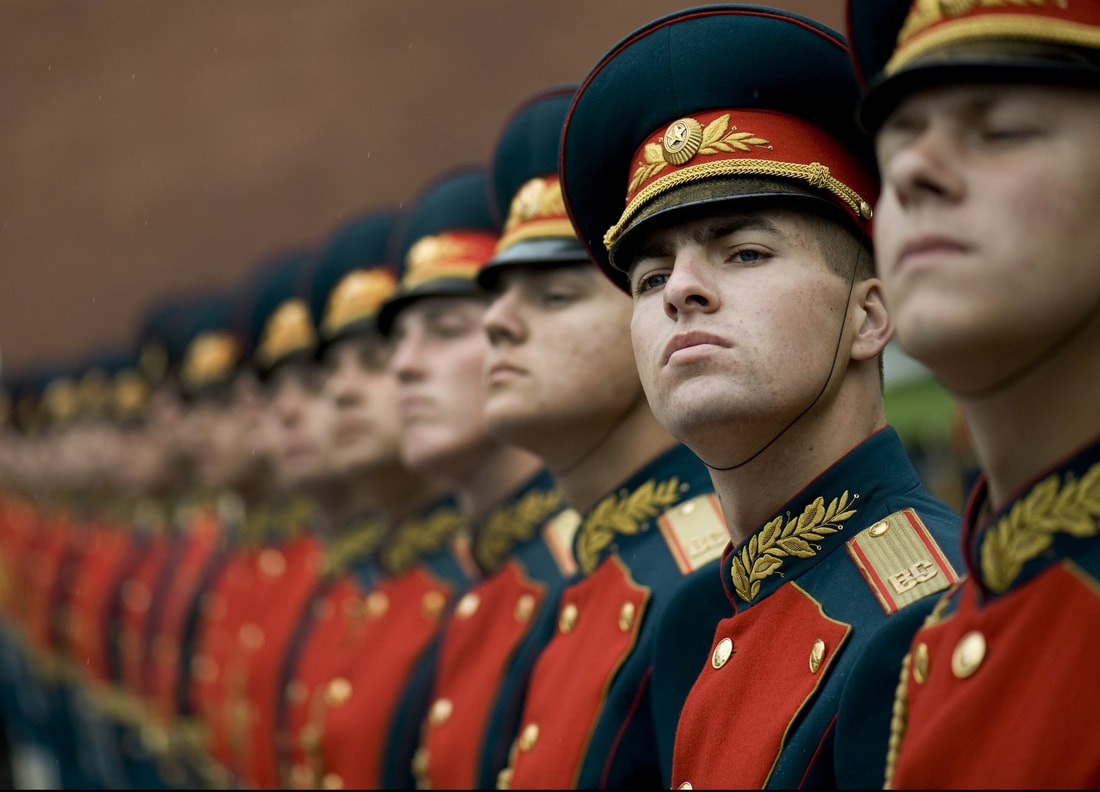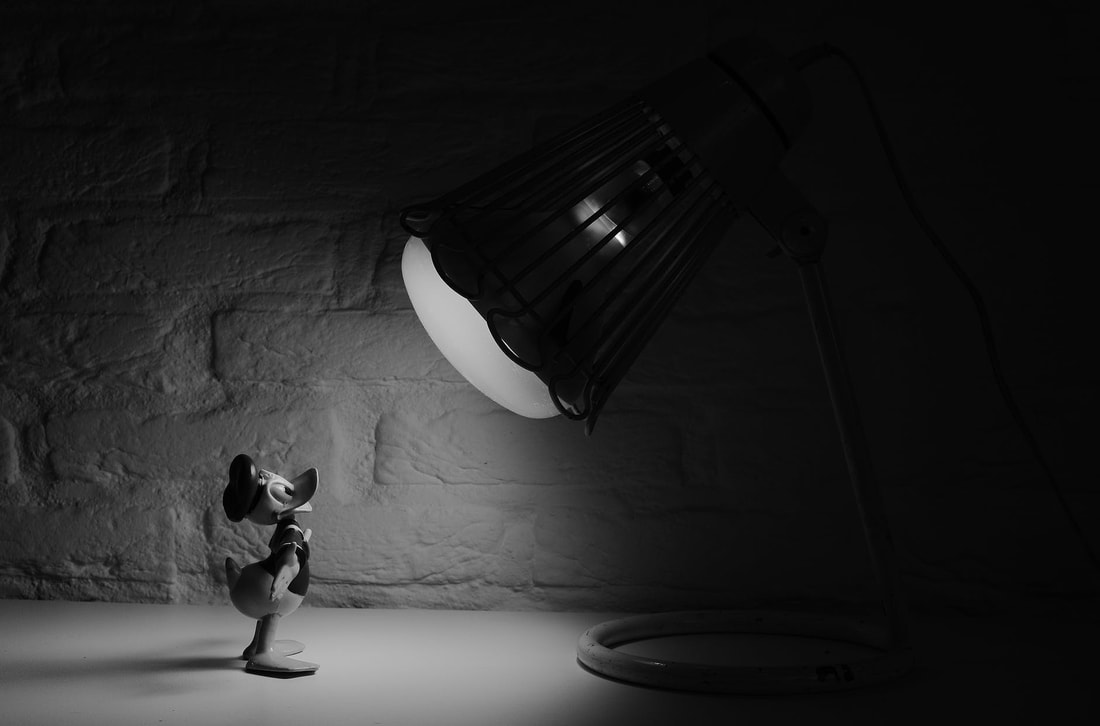|
Following the end of World War 2, communism took over Nazi Germany as the world’s greatest threat. In American, due mianly to many politicians stoking the flames, communism was seen as a real internal problem, not just an external one.
Joseph McCarthy initiated witch hunts – especially in the film community - in order to root out the communist threat that had supposedly embedded themselves in American society. Politicians knew that Hollywood had a large grip on the American consciousness and so that was the first place they turned in order to sway the mind of the country back to traditional American values. Anti-Communist Films in the 50s Some films were blatant propaganda films. Works like Walk East on Beacon! (1952), which J. Edgar Hoover was given a writing credit for, and Big Jim McClain (1952) blared their anti-communist sentiments. In Big Jim McClain John Wayne laments that the Bill of Rights is being corrupted by Stalinist Americans whose eventual goal is to destroy it; but he nevertheless realizes that he has to expose them by following the Constitution. While most Americans don’t remember these films and have thankfully faded from memory, there are many anti-Communist movies that still stand the test of time. In Alfred Hitchcock’s very profitable North by Northwest (1959), for example, the main character is mistaken for a spy and falls into an unknown world of deceit and deception, in a film that is thought of a predecessor to the James Bond films to come. Another Cold War film, released in 1953, arguably the height of McCarthyism, was profitable and complex. Pickup on South Street (1953) didn’t portray Communists as neurotic dolts, but as wealthy and cultured Americans. Hollywood’s adoption of the anti-communist rhetoric was not wholly due to pressure from Washington. Many of the decision makers in the industry saw the adoption as a necessity in order for Hollywood to survive. Following the Blacklist, anti-communist themes began to appear in films across a multitude of genres. The films varied in the prevalence of their anti-communist rhetoric. Many different genres incorporated anti-communism into their films. The growing genre of science fiction made the public leery of science experiments. Westerns warn viewers of an encroaching threat that must be stopped. The enormous religious epics, from men like Demille, tapped into the religious aspect of the ideological difference between America and the U.S.S.R. Science Fiction was a growing genre in the 1950s and was wholly affected by anti-communism. The sci-fi movies being produced in the late 1940s and 1950s were generally B grade films that could be churned out because of low budget costs. Anti-Communism in Science Fiction Invasion of the Body Snatchers (1956) is a prime example of science fiction making commentary on ideology. It tells the story of a small town doctor who begins to see paranoia running high in his town due to the people of the town being replaced by imposters. Just in the opening scenes one can easily see the similarities to the Red Scare, with paranoia running high and people concerned that their family or friends are communists. Anti-Communism in Westerns Westerns became a great voice for Hollywood’s anti-Communist sentiments directed at the public. John Ford was one of the most highly regarded western film directors who included his anti-communist views in his work. Ford was a very accomplished director winning seven out of twelve Academy Awards. His name was often associated with the greatest movie cowboy of all time: John Wayne. Wayne, who was brought in by the House of UnAmerican Activities Committee during their investigation of Hollywood and was the co-founder of the Anti-Communist Motion Picture Alliance for the Preservation of American Ideals, was a cold warrior who did his part by starring in these westerns pregnant with anti-communism. More anti-communist westerns would arise in the late 1950s and early 1960s including The Magnificent Seven (1960) and John Wayne’s directing debut, The Alamo (1960). These movies celebrated good-old American values. Conclusion Over time, as the Cold War cooled down, films became less subtle about their anti-communist sentiments, especially with the rise of action movies in the 1970s and 1980s. Movies like Firefox and Red Dawn pit America directly against the Soviets in more non-traditional settings unlike the direct propaganda movies of the 1940s and 1950s. This history of anti-communism could possibly be blamed for all of the Russian villains in modern cinema. Even today with films like Red Sparrow, Russians are often the fall-back for bad guys.
0 Comments
Koreans are known for their pho and their movies. (We’re not going to mention Gangnam Style). This tiny country with just over a population of 51 million are known to produce some of the best romance and horror films. However, it was the crime drama that propelled Korean cinema to international status. In the last thirty years, Korean filmmakers have set the tone for some of the best films around the world. Korean Crime drams are a highlight of cinema with some of the best action, plot twists and character development. These films excel in all major categories from acting, writing, cinematography, resulting in highly entertaining outcomes that also have great depth and artistic value, in contrast to the general rule of the genre. The following are a few of the best among them. 1. Sympathy for Mr. Vengeance (2002) The first part of “The Revenge Trilogy” a deaf-mute factory worker is desperate to arrange a kidney transplant for his dying sister. The worker gets in touch with criminals who strike a deal with him. He can sell his kidney to them in return for 10 million dollars to get her sister the life-saving operation. But he has no money to pay for his own surgery. That is when his street-smart girlfriend gives him the idea to kidnap his boss’s daughter for extortion money. But things predictably go wrong and set him on a path of vengeance. 2. Memories of Murder (2003) A serial rapist murderers his victims by gagging them with their underwear and then torturing them to death. To catch the serial killers, two unintelligent but audacious detectives come start working the case. But the lack of judgment makes them miss out on a valuable clue which could have solved the murder mystery easily. With master execution and fantastic visuals, this movie is one that you should not miss. 3. Silmido (2003) Based on a true story about the tension between a divided country – North Korea and South Korea. On Simido Island i, 31 criminals are being trained to get inside North Korea and kill North Korean leader Kim II-Sung. But then suddenly, peace talks start happening between the two countries which leads to the termination of the criminals. However the criminals have different plans and stage a revolt. 4. The Man from Nowhere ( 2010) A small pawnshop lives a quiet and lonely life. His sole company is a little girl named So-mae. Her mother, who is a drug addict, steals drugs from a dealer and hands them over to the girl without him knowing. When the dealer’s gang discovers the perpetrator, they kidnap her and her daughter and turn against the pawnshop owner. 5. Memories of Murder (2003) Based on Korea’s first real serial murder in modern history, the movie follows the investigation of the rape and murder of two young girls. However when they realize the murders are connected to other they quickly realize they are in over their head. This film is masterfully constructed with its intense violent scenes, keeping the viewer on the edge of their seat as the mystery of the crimes are slowly uncovered. 6. A Bittersweet Life (2005) The film follows the life of a low-level gangster whose life takes a drastic turn when he rejects his boss’s instructions to kill his cheating girlfriend. The gangster has to go on the run, escaping the wrath of his boss. Now the gangster has to live up to the wrath of his powerful boss and his whole life goes upside down. The movie did extremely well at the box office and Empire Magazine named it third on their poll of the 20 greatest gangster films. 7. Oldboy (2003) This is the best known (partly due to its Hollywood remake) and maybe the best Korean crime drama on this list. It is also the most successful South Korean movie ever made. The intensity of the movie can be assessed by the plot twists and turns as the viewer is slowly revealed what is happening with a surprise ending. The film follows a drunken man who wakes up and finds himself in a cell where he remains for 15 years. When he escapes he tries to track down the people responsible for holding him captive and must find out their motive. Hollywood loves a sure thing and (usually) nothing is surer than a remake of a popular movie. You already had a great storyline and a map to guide the producers to blockbuster gold.
However, once in awhile there is a remake that isn’t widely known as a remake. Sometimes it’s because the producers want their film to appear original and other times it’s just an oversight by the general population. Here are a film that might not have realized were remakes. “The Departed” (2006) Original: “Infernal Affairs” (2002) This critically acclaimed Martin Scorsese film that won the Oscar for Best Picture is actually a remake of a Hong Kong crime-thriller called Infernal Affairs. The film was wildly popular in Hong Kong and the rights to remake it were bought by Brad Pitt's production company when it was given a Hollywood spin. “The Sound of Music” (1965) Original: “The Trapp Family” Almost a decade before Julie Andrews, most famous for her rules as Mary Poppins, played Maria von Trapp in the cinematic classic, a German film called The Trapp Family which was made in 1938 just before World War 2 broke out. We have to admit the title of the original doesn’t have any of the flare or catchiness of the Hollywood version. The Trapp Family was so popular in Germany that American studios took an interest and then secured the rights to remake it into the classic it now is. “Some Like It Hot” (1959) Original: “Fanfare of Love” This Marilyn Monroe classic is actually a remake of a remake. The director couldn't locate the original script for the French film Fanfare of Love which was made in 1935, however he got hold of the German remake. He decided to base his film on the German version instead. Although Some Like It Hot is seen as a remake the story of two musicians in search of work, the writer, Billy Wilder, was the creator of the gangster subplot that kept the musicians on the run which strengthens the story considerably and makes the film considered one of the best of all time. “Scent of a Woman” (1992) Original: “Scent of A Woman” Scent of a Woman earned Al Pacino an Oscar for Best Actor for his role as Lieutenant Colonel Frank Slade. It is a remake of a 1972 Italian film called Commedia all'italiana, a film directed by Dino Risi, based on Il buio e il miele, a story by Giovanni Arpino. Both Risi and the leading actor Vittorio Gassman won important Italian and French awards. The Al Pacino follows a different plotline the Italian original although some familiar themes like war and suicide are still central to the film. “The Wizard Of Oz" (1939) Original: "The Wonderful Wizard of Oz" (1910) Though now considered a classic, the 1939 adaptation of the beloved children's book "The Wonderful Wizard of Oz" was not the first film to be crafted from the fantasy story. Produced out of contractual obligation associated, the 1910 film showcases a much different tale than the beloved Judy Garland version. With the Scarecrow already being alive in Kansas, he helps save Dorothy to end up in the land of Oz, where they meet the Tin Woodman and the Lion. The Scarecrow becomes the king of Oz while Dorothy leaves in a hot air balloon with the now-retired wizard. "A Fistful Of Dollars" (1964) Original: "Yojimbo" (1961) Sergio Leone's "A Fistful of Dollars" is largely credited with creating the genre known as the Spaghetti Western. It also Clint Eastwood as the handsome, lone stranger, a character he perfected through his long career. However, it didn't pay credit to its original source film, Akira Kurosawa's "Yojimbo." The storyline of a stranger caught between two feuding crime families is basically the same in both films. Kurosawa sued Leone and settled out of court, receiving 15% of the total box office receipts for the popular Western film. Hollywood is known for it’s remakes but it’s not often that it remakes a sequel – and a poorly madeone at that. However what makes this interesting and exciting is that it’s getting a reboot from talented District 9 director Neill Blomkamp. It’s pretty difficult to think of another name which would do the RoboCop franchise justice than Blomkamp. MGM is partnering up with Sony pictures to developing “RoboCop Returns” after “RoboCop” remake, directed by Jose Padilha and starring Joel Kinnaman as the title character introduced the film to a new generation of audiences. The film did decently at the box office, grossing $240 million worldwide. However, many critics feel that the remake failed to take the franchise in an interesting new direction. Original screenwriter Ed Neumeier is producing “RoboCop Returns” and Michael Miner is executive producing. Justin Rhodes will rewrite the script that Neumeier and Miner wrote as a sequel to Verhoeven’s original. Despite "RoboCop’s" success in 1987, "RoboCop 2" was troubled production from beginning to end, with Miller's script being reworked by Wild Bunch screenwriter Walon Green and the sequel's original director, Tim Hunter, leaving before the beginning of principal photography. The Empire Strikes Back director Irvin Kershner stepped in at the eleventh hour, but the resulting film was something of a disappointment when it emerged in 1990: a mixture of storylines with some interesting possibilities that never blossomed to their full potential. Although sequels in a movie series traditionally follow one after another, it's not unheard of for certain series to ignore specific predecessors so as not to be creatively restrained. This, sometimes fortunately and sometimes unfortunately, is happening more and more as we sequel after sequel. Thankfully Blomkamp will likely have free rain on the storyline. This means he’ll likely ignore the plotline of the sequels and will probably take the movie to new and interesting directions. What exactly the storyline is and how it will pertain to the 2014 version remains to be seen. As things stand now, it doesn't sound like the new Robocop movie has been officially greenlit, but if MGM likes what Ed Neumeier and Neill Blomkamp create, then no doubt the studio won't waste anytime putting it into production. There's no release date set for this yet, but fans will be eagerly awaiting for updates. We call it the Game of Thrones phenonium – when main characters get killed off and it leaves the viewer with a huge jolt of what just happened? This, of course, is a common occurrence with all type of top primetime dramas including The Sopranos, The Walking Dead, House of Cards, and Boardwalk Empire – just to name a few. However sometimes producers get so fed up with an actor they kill them off prematurely just so they don’t have to deal with them. These actors fight with other actors, have off-screen antics, or are just plane disagreeable. Here is a list of television’s top 5 biggest actor blowouts. Thomas Gibson on Criminal Minds Thomas Gibson was fired after his temper allegedly got out of hand on set. Apparently, Gibson was even ordered into anger management classes after he allegedly pushed an assistant director during a disagreement. We don’t think his classes helped. Before the Criminal Minds altercation, Gibson was abusive on the set with another actor. Gibson reportedly had numerous issues with co-star Shemar Moore, with whom he often argued about scheduling, and Gibson was described by show staffers as being subject to severe mood swings on set. John Rhys-Davies on Sliders John Rhys-Davies was a major star of Sliders, which ran in the late 90s. However, he was killed off midway through Season 3. With allegedly a long history of drinking issues, apparently, the actor continually referred to the show’s scripts as gibberish. Ouch! He would also tell the writers his lines were incomprehensible. There was definitely no love loss between them as the writers weren’t much better. Instead of heeding his complaints, they told him to read the words as they were written. These clashes lead to his death on the show and he insisted the writers messed up with him because of their lack of vision. We can only imagine the glee the writers felt after killing Rhys-Davies character off. Maggie Roswell on The Simpsons When Maggie Roswell, the voice actor who played the infamous Maude Flanders on The Simpsons, left the show after the network said that she didn’t want to commute to Los Angeles from her home in Denver any longer. However, Roswell had a different story. She said that she was only making $150 per episode and asked for a raise. Fox said she really made around $2,000 per episode, but she stated she didn’t have enough per show to even cover her flights. Either way, Roswell left and Maude Flanders was voiced by a few others for several episodes before she was killed off by shirts fired from a gun in the stands of a Nascar race. It was a funny way to go, but she died mainly because Fox didn’t want to cover plane tickets. Michelle Rodriguez on Lost Michelle Rodriguez is well known for her bad girl image—both onscreen and off. While she was apart of the cast for Lost, she was picked up for a DUI and fined $500. She spent a few nights in jail and then was soon killed off on Lost. Producers on the show say the death was planned ahead of time, but to us it seems strange that bad behavior was so closely followed by the end of her character. The Others on the show were able to get away with plenty, but when it came to those on the opposite side of the island, one bad night was enough. Charlie Sheen on Two and a Half Men Probably the most famous offscreen blow up was, of course Charlie Sheen. The series, which was created for him and revolved around a character with his name who lived a life resembling his own bachelor lifestyle. However, Sheen and the series creator Chuck Lorre had no love lost between them. While Sheen was dealing with multiple substance abuse issues, it is no excuse for his terrible behaviour. When he was fired for his constant disruptions, he lashed out in a series of angry interviews and tweets, calling his boss a maggot and making anti-Semitic remarks about him. And this was only the tip of the iceberg when it came to his reported bad behaviour which involved drugs, alcohol and prostitutes. He was reportedly participating in a rehabilitation program, but no form of rehab got him back in the good graces of his show’s creator. Since the success of Stephen King’s IT, the famous horror writer has enjoyed a Hollywood revival with a number of cinematic adaptations, and none of the author's works is hotter than Firestarter (pun intended).
Every film studio is pushing its Stephen King stories with Warner Bros making IT: Chapter 2, and Paramount is filming Pet Seminary. So be prepared to be inundated with classical horror movies in the next year. The novel was first adapted for film in 1984 which starred Drew Barrymore. A remake of Firestarter has been discussed for years now, but things really began to roll when the project was officially announced this year when Faith Akin was announced to direct. Fatih Akin most recently directed In the Fade, which took home a Golden Globe for Best Foreign Film. Scott Teems will write the script (he worked on Netflix’s Narcos) while Akiva Goldsman who was originally attached to direct will produce. Firestarter tells the story of a young girl named Charlie who develops pyrokinetic abilities and is pursued by a secret government agency, called The Shop that wants to use her as a weapon. Do you think it sounds familiar? In Stranger Things, Charlie's parents also participated in The Shop's experiments with LSD and gained powers that caused nosebleeds. The original Firestarter is not considered to be one of the better Stephen King adaptations, so this remake provides a great opportunity to do something special without too high of expectations. The original Firestarter received lukewarm reviews and therefore it’s not as risky as remaking truly great King adaptations like Carrie or The Shining. In many ways, the original can be improved upon quite a bit. Here’s hoping they find a way to incorporate Prodigy’s 1997 hit song of the same name somewhere in the movie this time, maybe during one of the big pyro freak-outs. No release date has been given for the new Firestarter as of yet. The new version of Firestarter will be a collaboration of Universal and Blumhouse Films, was first announced at the Overlook Film Festival in Oregon, which is named after King’s infamous haunted hotel from The Shining. Not only is the festival named for The Shining hotel, it is also held at the Timberline Lodge in Oregon, which served as the exterior of the Overlook Hotel in Kubrick’s classic film version of the novel. It’s unknown if Firestarter will have a larger budget or remain a smaller budgeted fare, especially since Akin isn’t known for his mainstream films. This would be his second collaboration with Blumhouse Films after the just completed film Stephanie, which also premiered at the Overlook Film Festival. Disney is closing down one of its studios, Disneytoons – known for its direct-to-video films – in Glendale California as the media company tries to reorganize how it pushes out its content and struggles to compete with companies like Netflix. Disneytoon was created in 1988 as Disney Movie Toons and specialized in direct-to-video sequels to popular Disney animated films. The division produced such titles as The Little Mermaid: Ariel’s Beginning and Mulan II – titles that were made and produced with a lower budget to capitalize on the initial movie’s success. Many of these titles were released in home-video format, including DVD and Blu-ray – formats that have gone the way of the dinosaurs. As we all know, the market for these physical formats has shrunk as audiences embrace streaming video and online content. The shutdown of Disneytoons signifies what we knew a long time ago, which is the direct-to-video business is dead and gone. Although Disney has some streaming platforms, Disney as a whole is late to the party and should be more nimble in company reorganization – something that will be key to its future success. Last year Disney announced that starting in 2019 they will launch a Netflix-type streaming service which means they will move a lot – if not all of their content online. Will this be enough to take back some market share or will it be too late? Who knows? A year is a long time to wait in the online world and a lot can happen between now and then. Part of the problem is out of their control as personal issues make front page news. The CEO of Pixar John Lasseter, a man who has driven a lot of the company’s advancement will leave the company at year’s end after allegations that he engaged in inappropriate workplace behavior. Burbank-based Disney has since named two animation filmmakers to take his place: Jennifer Lee, who co-directed the blockbuster “Frozen” for Disney Animation, and Pete Docter, the writer-director behind Pixar’s “Inside Out” and “Up,” will become chief creative officers of their respective studios. One of their biggest competitors, Netflix, is breathing down their neck – and depending on who you ask, has actually surpassed the multimedia conglomerate and is now the most highly valued content producer in the industry. While market capitalization may not be a true determination of asset value – merely Wall Streets’ hope that Netflix will continue its upward trajectory. In truth Netflix only brings a fraction of the revenue in that companies like Disney and Comcast do but if anything is decided it’s that streaming is the future. Netflix is increasingly drowning in debt and isn’t generating a positive cash flow, yet it’s valued at about $152.8 billion while Disney is only valued at $147.9 Billion. Streaming presents a challenge for a traditional media company like Disney. For inspiration, the company might look to its founder. In the 1950s, when Walt Disney launched Disneyland on TV and opened his eponymous theme park in Anaheim, California, he envisioned his business as an infinity loop of merchandising, in which filmed entertainment sold toys, toys sold filmed entertainment, and both sold park tickets. It’s not hard to imagine how a Disney streaming product could work the same way. With Disney being a well-known international brand, Disney could capitalize on this direct-to-consumer viewership and can go far beyond films and television shows. For example, subscribers at premium membership levels could get special offers for Disney cruises and line-skipping passes at Disneyland and Disney World. In this vision, Disney’s steaming service wouldn’t just be Netflix with animated films, it would be Amazon, Netflix and Universal Studios all rolled into one. That’s a product that could rival Netflix and create the kind of profits Disney has enjoyed during its unprecedented century of dominance. |
AuthorJeridoo Productions' own Blog about our Productions, Projects and Film- and Movie-related News. Archives
October 2022
|
JERIDOO UNIVERSE AG |
MOVIE PROJECTS |
MEDIA |
© Copyright 2018 Jeridoo Universe AG









 RSS Feed
RSS Feed